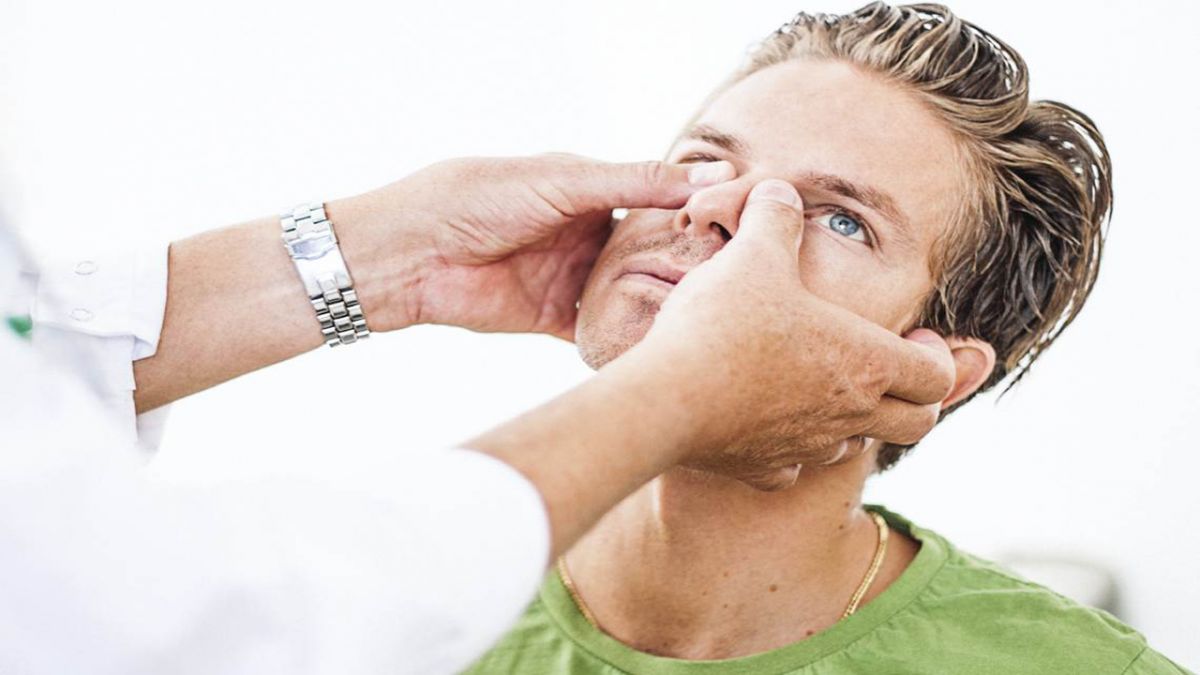Advertisement
Vasomotor rhinitis is a chronic nasal condition characterized by persistent or episodic nasal symptoms, including congestion, runny nose, and sneezing, that are not triggered by allergies or infections. Unlike allergic rhinitis, which involves an immune response to allergens, vasomotor rhinitis occurs due to abnormal regulation of blood flow in the nasal tissues. This dysregulation leads to swelling and increased mucus production, which can cause discomfort and impair quality of life. The exact cause of vasomotor rhinitis is not fully understood, but it is believed to result from heightened sensitivity of the nerves in the nasal lining. These nerves can overreact to various triggers, such as environmental changes, irritants, or even emotional stress, leading to the hallmark symptoms of the condition.

Common triggers of vasomotor rhinitis include strong odors, such as perfumes, smoke, or cleaning products, as well as changes in temperature or humidity. Exposure to cold air, for example, can cause nasal congestion and a runny nose in affected individuals. Similarly, hot or spicy foods can provoke symptoms, a phenomenon often referred to as gustatory rhinitis. Emotional stress or hormonal changes, such as those occurring during pregnancy or menopause, can also exacerbate symptoms. Unlike allergic rhinitis, vasomotor rhinitis does not involve itchy eyes or throat, and allergy testing typically yields negative results. This distinction is crucial for accurate diagnosis and management.
Symptoms of vasomotor rhinitis can vary in intensity and frequency. Some individuals experience symptoms year-round, while others may notice a worsening of their condition during certain seasons or in specific environments. Nasal congestion is often the most bothersome symptom, causing difficulty breathing and a sense of fullness or pressure in the nose. Rhinorrhea, or a constant runny nose, is another common complaint and can be particularly frustrating for patients who must frequently blow their nose or use tissues. Sneezing is also frequent but tends to occur in bouts rather than as a persistent symptom. For some individuals, vasomotor rhinitis can lead to secondary complications, such as sinus infections or disrupted sleep, further impacting overall well-being.
The diagnosis of vasomotor rhinitis typically involves a thorough medical history and physical examination by a healthcare professional. It is important to rule out other potential causes of nasal symptoms, such as allergic rhinitis, sinusitis, or structural abnormalities like nasal polyps or a deviated septum. Nasal endoscopy or imaging studies may be recommended in certain cases to evaluate the nasal passages and rule out underlying conditions. Because there are no specific tests for vasomotor rhinitis, diagnosis is often based on the exclusion of other causes and the presence of characteristic symptoms.
Management of vasomotor rhinitis focuses on reducing symptoms and avoiding known triggers. Identifying and minimizing exposure to irritants, such as smoke, strong odors, or sudden temperature changes, can significantly alleviate symptoms. Using a humidifier in dry environments may also help maintain moisture in the nasal passages and reduce irritation. For those whose symptoms are triggered by weather changes, wearing a scarf or mask over the nose in cold weather can provide protection and reduce discomfort. Dietary adjustments, such as avoiding hot or spicy foods, may benefit individuals who experience gustatory rhinitis.
Medical treatments for vasomotor rhinitis aim to control symptoms and improve quality of life. Nasal saline sprays or rinses can help flush out irritants and soothe the nasal passages, providing relief from congestion and dryness. Intranasal corticosteroids are commonly prescribed to reduce inflammation and are effective for many patients. These medications are applied directly to the nasal lining and can help alleviate nasal congestion and other symptoms with regular use. Anticholinergic nasal sprays, such as ipratropium bromide, specifically target rhinorrhea by reducing mucus production and are particularly useful for patients with a persistent runny nose. In some cases, decongestants or antihistamines may be recommended, although their effectiveness for vasomotor rhinitis is generally limited compared to allergic rhinitis.

In recent years, surgical interventions and alternative therapies have been explored for managing severe cases of vasomotor rhinitis that do not respond to conventional treatments. Procedures such as radiofrequency ablation or cryotherapy aim to modify the overactive nerves in the nasal lining, reducing their sensitivity and decreasing symptoms. These procedures are minimally invasive and can provide long-lasting relief for certain individuals. Acupuncture and other complementary therapies have also been suggested as potential treatments, although more research is needed to confirm their effectiveness.
Living with vasomotor rhinitis can be challenging, but with proper management and a proactive approach, most individuals can achieve significant symptom relief and maintain a good quality of life. Educating patients about the nature of the condition and the importance of trigger avoidance is a key aspect of treatment. It is also important to address any underlying factors that may contribute to symptoms, such as stress or hormonal imbalances. Regular follow-up with a healthcare provider can help monitor progress, adjust treatment plans, and ensure optimal outcomes.
In conclusion, vasomotor rhinitis is a chronic and often frustrating nasal condition that can significantly impact daily life. Although the exact cause remains unclear, identifying triggers and implementing targeted management strategies can help control symptoms and improve overall well-being. Advances in medical treatments and surgical options continue to offer hope for individuals with severe or refractory cases, providing new avenues for relief and a better quality of life.
Advertisement




